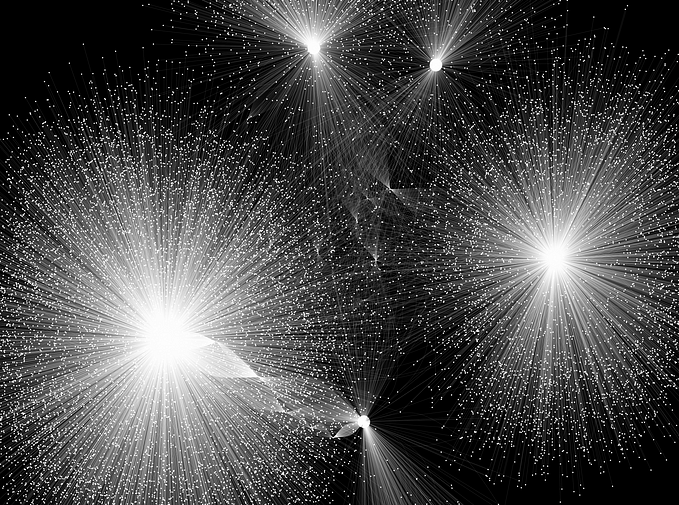
“I still don’t know the artist…”
A little gumshoe adventure in cryptoart
This brief post details some mild “chain archaeology.” It describes my hunt for the identity of an artist who made a particular work called “Priestess,” on KnownOrigin in 2018. Cryptoart leaves all kinds of traces, on traditional web platforms, but also in the cavernous depths of the chain. How do you leverage these sources of information to find an artist?

KnownOrigin
The mysterious piece in question, “Priestess,” was shared on KnownOrigin. KnownOrigin is one of the earliest platforms for art creators and collectors on Ethereum. Its first contract (V1) deployed in April, 2018. Many well-known cryptoartists contributed. Creators who submitted work to KnownOrigin’s V1 include Stina Jones, hex6c, Hackatao, oficinastk, Alina Loseva, Aktiv Protesk, Martin Lukas Ostachowski and more. Many of them descended upon Cryptovoxels shortly after, creating the first art galleries straddling the worlds of web2 and web3.

I am intrigued by these histories, and this past summer I began to keep watch on the V1 contract, hoping I might secure a piece. KnownOrigin long ago upgraded to a new V2 contract, and their site no longer shows these original NFT art tokens (most were migrated as new tokens, stamped with date September, 2018). OpenSea still lists the V1 tokens, and you can peruse these early creations. If you sort KnownOrigin’s artworks by date (oldest first), you can see the earliest pieces from V1 (contract 0xdde2d…). There are only about 300 of them, and most have been migrated. A few weeks ago, a piece called “Priestess,” powerful and mysterious, was listed for a lower price. I went for it. I was very excited to own a little piece of cryptoart history. “Priestess” was first released in a minting transaction over three years ago, in early May, 2018.
“Priestess” Creator?
OpenSea shares only a limited set of attributes, and for “Priestess” the artist is not listed. I could not consult the main KnownOrigin site, which appeared not to have migrated “Priestess” in its September, 2018 updates. But a neat fact about digital art is the increased likelihood that there’ll be Internet breadcrumbs that can be followed. And for cryptoart, clues can be even more plentiful, extending back into the blockchain itself.
For example, I first found myself meandering the chain, seeing if I could determine the artist’s Ethereum address by exploring payout on the chain — authors might still receive royalties from sales. After unfolding the graph of transactions programmatically, and finding some candidate addresses, I started feeling a little invasive. Maybe the artist doesn’t want to be identified?
The obvious first thing to try was simply to search for “Priestess” and “KnownOrigin” on Twitter. I should have tried that first. If they were okay with being revealed, there’d probably be a post on Twitter. Some yield immediately:

I contacted Shortcut (kind and early crypto artist), and we briefly corresponded about our pieces. Neither of us had any idea.
The next stop was Etherscan, to peruse the token’s URI. I was worried this might be just an external link, dead now because it was for KnownOrigin V1. Lo, ’twas not. An IPFS CID!

When visiting this CID, you get the standard URI JSON that specifies the NFT’s metadata. There is no entry for “artist,” unfortunately. But there is an extra item, a “meta” IPFS CID… a different IPFS CID from this one.

When I visited this “meta” content, it contained everything: attributes, origin, description, and even the piece itself. This was exciting to see: Even in its earliest contract, KnownOrigin’s founders had the foresight to encode so much information on the contract or on IPFS, and indeed KnownOrigin V1 pieces are completely stored on IPFS. I could now see that “Priestess” was made by Lee Holland, a creative and UX professional still working in the space, with a current focus on Bitcoin.


Shortcut helpfully suggested I directly contact the artist. I DM’d Lee and he shared some of his current activities. He has some other great pieces on KnownOrigin V1, like “Bitopian” and “Ethereum Inside.” I appreciate cryptoart generally, and especially cryptoart that uses the space as its core theme.

A Decentralized Art Gallery
As noted above, these KnownOrigin V1 items are no longer listed on its platform, and while most migrated onto the new contract, some stayed on V1. There was careful reasoning behind this — already purchased items could be voluntarily moved, it seems.

It seemed these V1 tokens, as a group, could be experienced together as a kind of ensemble, a little gallery unto themselves. These original V1 pieces are an enticing part of cryptoart history, especially on Ethereum. The ERC-721 standard was first implemented with CryptoKitties in late 2017. KnownOrigin V1 was released just a few months after this, in April, 2018. So having discovered that all of these pieces are on IPFS, I decided to create a gallery just for this V1 contract. The tokenURI() function, and the second-order (“meta”) IPFS link, give all the information needed. It can all be extracted automatically. I spun up a Moralis server, acting as a node that calls the V1 contract directly. With JS and a CloudFunction on Moralis (amazing resource), I could generate a bespoke JSON structure that feeds into a website.
I populated the website with a few pieces of information by hand, to speed up site loading (there are, after all, only about 300 tokens to display). But for the most part, this is a “decentralized” art gallery: Information about each token is pulled directly from the Ethereum blockchain, and then the metadata and image itself are summoned from IPFS. Here’s the gallery.
https://takenstheorem.weebly.com/kov1-gallery.html
This website is an illustration of the power of NFTs in this space… years after their creation, an anon deploys a little art gallery rendered directly from the encodings of creatives.

A further surprising, subtle detail emerges from the on-chain data of V1’s setup: You can extract the reserve price of a piece upon release, in ether. In the gallery, I show this initial value in USD. I used the Coin Metrics community API to estimate dollar value of that listing. Years ago, we have these great cryptoartists sharing their works with each other and with other collectors for rather modest sums, often for less than $20 or $30. Their true value then should be assessed from the excitement of an emerging community…










